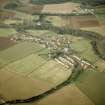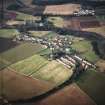Pricing Change
New pricing for orders of material from this site will come into place shortly. Charges for supply of digital images, digitisation on demand, prints and licensing will be altered.
Upcoming Maintenance
Please be advised that this website will undergo scheduled maintenance on the following dates:
Thursday, 9 January: 11:00 AM - 3:00 PM
Thursday, 23 January: 11:00 AM - 3:00 PM
Thursday, 30 January: 11:00 AM - 3:00 PM
During these times, some functionality such as image purchasing may be temporarily unavailable. We apologise for any inconvenience this may cause.
Ruchlaw House, Walled Garden And Sundial
Sundial(S) (Period Unassigned), Walled Garden (Period Unassigned)
Site Name Ruchlaw House, Walled Garden And Sundial
Classification Sundial(S) (Period Unassigned), Walled Garden (Period Unassigned)
Canmore ID 57836
Site Number NT67SW 5.01
NGR NT 61835 74058
NGR Description Centred on 61835 74058
Datum OSGB36 - NGR
Permalink http://canmore.org.uk/site/57836
- Council East Lothian
- Parish Whittingehame
- Former Region Lothian
- Former District East Lothian
- Former County East Lothian
NT67SW 5.01 61835 74058
See also NT67SW 5.04.
NT67SW 5.01 61835 74058
There have been three different sundials at Ruchlaw. An undated photograph (G 90902 PO) shows in the walled garden the lectern sundial, which is described and illustrated in MacGibbon and Ross, Castellated and Domestic Architecture of Scotland, Vol. V, pages 424 - 425. A later photograph, dated 1975/6 (EL 6988), shows the horizontal sundial, also described in MacGibbon and Ross, ibid., page 486, in the walled garden apparently on the spot where the lectern was previously located. A note in the Somerville Collection (MS 5741/4/17) states 'according to the current owner (1981) ....... the previous owner had buried it (the lectern sundial) beneath the greenhouse'. A third sundial, which appears to be a modern horizontal dial, is illustrated in another photograph dated 1975/6 (EL 6991). It was located on the west lawn at approximately NT61818 74121. (Anne Cassells, 16 July 2009).
Field Visit (24 April 1920)
217. Ruchlaw.
On the left bank of the Sauchet Water, and less than ¼ mile west of Stenton village on the other bank, is the mansion of Ruchlaw, a 17th-century house built by Archibald Sydserff and still occupied by his descendants. It is built on an L plan; the main block, 67 feet long by 21 feet broad, lying east and west and the wing, which contains a turnpike stair, projecting southward from the eastern end. The building is three storeys in height. The walls are built of a reddish rubble in courses and are covered with harling, but the plain backset dressed margins of the voids and the moulded Renaissance eaves course are left exposed; the gables are crowstepped.
On a modern porch, which has been built out in the re-entering angle, are two carved and inscribed triangular pediment stones, which have been removed from some other portion of the building. The first has, beneath two stars, a shield charged: within a bordure a fleur-de-lys between three cinquefoils two and one. Flanking the shield are the initials A S for Archibald Sydserff, the founder, and the date 1663. The second pediment has a quarter-foiled ornament comprising four fleur-de-lys conjoined at the stalk, flanked by initials A S with initials E S below and the date 1663.
Internally the house is modernised; the ground floor apartments were originally vaulted but all the vaults except that of the eastern chamber have been removed. Several of the windows have heavily moulded cases and astragals which appear to be of memel pine and contemporary with the house.
The building is in good condition.
SUNDIALS.
Within the walled garden south of the house are two sundials. The first is a 17th-century lectern dial 5 feet 8 inches high (fig. 83). The shaft is octagonal on plan and has a moulded necking, capital and base. The dial-stone is wrought into 35 dials; the gnoma have been of wrought iron and are completely oxidised. This dial is presumably not in situ having been re-erected in the 19th century (1).
The second dial is later and less interesting. The dial stone is a small, flat slab of white marble, has a wrought iron gnomon, and is inset in a red freestone baluster, the total height being 3 ½ feet. The marble slab bears an illegible inscription, usually taken to be ROUGHLAW.
DOVECOT.
Within a park 200 yards southwest of the house is a dovecot rectangular on plan and probably contemporary with the house.
HISTORICAL NOTE.
William 'Sydserff' of Ruchlaw is on record in 1623 (2); Mr. James, ‘Sydserfe’ of ‘Rouchla’ was in 1644, appointed to take control of the Whittinghame estates (3), and Archibald ‘Sydserfe’ of Ruchlaw (1666) was his son (4).
RCAHMS 1924, visited 24 April 1920.
(1) Cast. and Dom. Archit. v., p. 424; (2) Reg.Mag. Sig. s.a., No. 498; (3) Reg. Pr. Co. viii., (Second Series) p. 36; (4) Inquisit. Special. Hadd. No. 283.
OS Map ref.: xi. N.W.




















